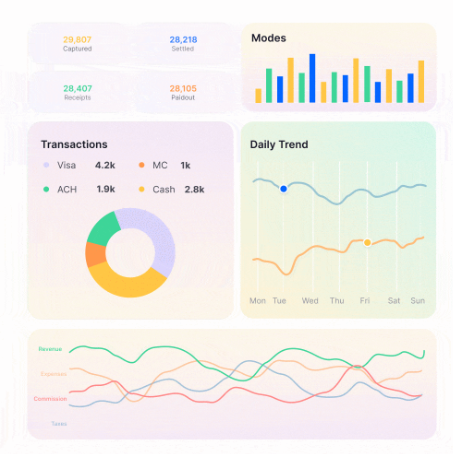Bank reconciliation is a crucial aspect of financial management for businesses of all sizes, ensuring accuracy and transparency in financial records. However, the traditional manual approach to reconciliation is time-consuming, error-prone, and inefficient. In response to these challenges, bank reconciliation automation software has emerged as a powerful tool to streamline processes and enhance operational efficiency. This article explores the significance of bank reconciliation automation software for businesses and its potential to revolutionize financial operations.
Understanding Bank Reconciliation Automation Software:
Bank Reconciliation Automation Software for Business utilizes advanced algorithms and technology to automate the reconciliation process between a company's accounting records and bank statements. These software solutions match transactions, identify discrepancies, and reconcile accounts with minimal human intervention, significantly reducing the time and effort required for reconciliation.
The Challenges of Manual Reconciliation:
Manual reconciliation processes are labor-intensive and prone to errors, leading to delays in financial reporting and decision-making. Finance teams must dedicate significant resources to match transactions, verify amounts, and investigate discrepancies, hindering operational efficiency and productivity.
Key Features and Benefits of Bank Reconciliation Automation Software:
Efficiency: Bank reconciliation automation software accelerates the reconciliation process, saving time and resources for finance teams. By automating repetitive tasks, such as data entry and matching, these solutions improve productivity and allow staff to focus on strategic activities.
Accuracy: Leveraging advanced data-matching algorithms, bank reconciliation automation software minimizes the risk of errors associated with manual processes. The software identifies discrepancies promptly, ensuring the accuracy and integrity of financial records.
Real-time Insights: Bank reconciliation automation software provides real-time visibility into financial transactions, enabling businesses to monitor their cash flow and financial position more effectively. Real-time insights empower decision-makers to respond promptly to emerging opportunities and challenges.
Customization: Many bank reconciliation automation software solutions offer customizable features and workflows tailored to the specific needs of businesses. This flexibility allows organizations to adapt the software to their unique reconciliation processes and requirements.
Integration: Bank reconciliation automation software seamlessly integrates with existing accounting systems, ERP software, and bank platforms, ensuring data consistency and accuracy across the organization. Integration streamlines processes and eliminates the need for manual data entry and reconciliation.
Implementation and Adoption:
Implementing bank reconciliation automation software requires careful planning and stakeholder buy-in. Businesses should assess their reconciliation needs, select a software solution that aligns with their requirements, and provide comprehensive training to users. Adoption of the software across the organization is essential to maximize its benefits and ensure smooth integration with existing systems.
Conclusion:
Bank reconciliation automation software offers businesses a powerful solution to streamline financial operations, enhance accuracy, and improve efficiency. By automating manual tasks, minimizing errors, and providing real-time insights, these solutions empower finance teams to operate more effectively and strategically. Embracing bank reconciliation automation software is not just about modernizing processes; it's about driving operational excellence and achieving financial agility in today's competitive business landscape.
For more info. visit us:
The role of CFOs in driving digital transformation in finance





Comments